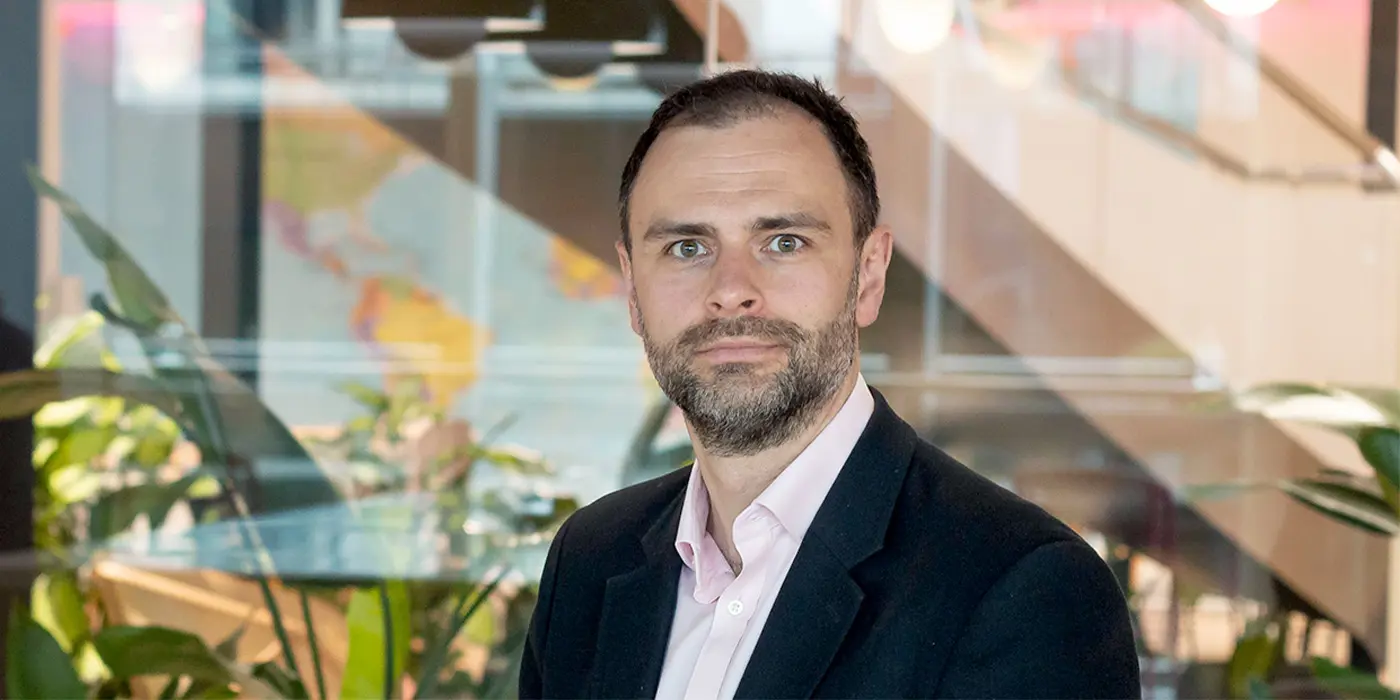
Four ways to maintain momentum in multi-year transformation programmes
5 min read 5 April 2024
A successful transformation programme can deliver many benefits for your business, including enhanced competitive advantage, increased agility, improved customer service, and greater operational efficiency.
But delivering transformation is challenging. Transformation programmes are multi-faceted, cutting across the entire business. They often impact people and technology, the operating model, and the way customers are serviced. Change on this scale can’t be delivered quickly. Indeed, transformations are usually multi-year initiatives, requiring considerable commitment and sustained investment.
Given the timelines and complexity involved, a common issue we see is a loss of momentum in the transformation. This can manifest as missed milestones, changes not being adopted or not landing as anticipated, and lack of confidence in the organisation’s ability to deliver change.
Loss of momentum is rarely down to a single root cause. Common reasons we see include lack of a compelling vision, losing sight of the purpose, change fatigue, not celebrating progress and achievements, priorities competing across multiple change initiatives or with BAU concerns, scope creep, and changes in leadership or delivery teams.
Baringa’s transformation framework mitigates these risks. It’s designed to help programmes maintain momentum across multiple years of delivery, by focusing on four key elements. Here, we’ll take a closer look at each of them.
1. Setting purposeful outcomes
Sustained value delivery requires upfront investment to align all the moving parts of the transformation programme and to anchor the leadership, delivery teams, objectives, and targets to the purpose of the change. It’s critical to define the transformation narrative, KPIs/OKRs, and business blueprint and ensure they’re understood by everyone, from the exec to the front line, because they guide the way teams operate and the decisions they make. All team members should be aligned around a common purpose, with comms, processes, controls, and measures in place to hold everyone to account and ensure they don’t lose sight of the transformation’s goals. Objectives and outcomes should clearly address the drivers for change.
Successful transformation programmes assign a full-time transformation leader and a supporting team with the right skills and experience to design, deliver, and communicate the transformation journey. It’s imperative for the entire leadership team to be aligned on the destination and share a common goal and sense of accountability to deliver the changes needed.
Once your top table is in place and aligned, delivery teams need to be brought on the journey from the outset. Share the transformation vision and direction of travel, be clear on what will change, for whom and why, and allow opportunities to provide feedback. This ensures transformation happens with your people, not to them – which is critical for success.
Establish a regular cadence of open and transparent comms to check-point on progress towards agreed milestones. These don’t always need to be major go-lives. Smaller wins that motivate the team and demonstrate progress can be just as impactful. It’s vital that the transformation comms strategy supports this approach to communicate your goals and celebrate progress against them.
2. Taking a people-driven approach
The leadership team plays a pivotal role in transformation – setting goals, sourcing investment, allocating sufficient resources, and keeping people engaged and motivated throughout. To operate in this role effectively, leaders need to fully understand the complexities involved in delivering transformation by combining deep operational know-how with their own experience. Only then can they be credible and make informed decisions on the transformation’s direction or course-correction.
Once leaders demonstrate their breadth of transformation experience and depth of business knowledge, and are clear on the programme’s direction, they will already be some way to winning the hearts and minds of their delivery teams. If leaders are able to underpin their delivery expertise with a pragmatic understanding of the organisational culture – staying honest about what will work and what won’t – then they have a platform on which to engage and drive continued outcomes with their teams.
But experience and cultural understanding alone aren’t enough to lead a transformation for its duration. Leaders need to continuously motivate and inspire their teams to show up and pull in the same direction, even in the hard times. These motivational skills can be taught and evolved through leadership development and coaching programmes, or they may need to be sourced externally. Either way, having an effective leadership team with the right skills and behaviours in place is a key enabler to building high-performing transformation teams.
Establishing and developing transformation capability throughout the programme will allow delivery teams to be self-sufficient and sustain outcomes. It requires a continued assessment of what capability is in place, and what might need to be sourced or developed. In turn, this presents an invaluable opportunity for team members to grow and develop new skills – people relish the challenge of stretch roles that go beyond their current expertise. What’s more, it’s vital to foster an environment of continuous improvement and a growth mindset. This encourages people to challenge the status quo, preventing things from becoming ‘same old’ – the enemy of innovation.
Maximising growth and capability development required an open and transparent environment to request and deliver 360-degree feedback. Leaders should work with their team members to understand their ambitions, and help to realise them. Good leaders also request feedback on their own performance and how they can empower their teams to work at their best. With this, everyone is engaged in their career development plans, clear on their own purpose and sees how it contributes to the broader transformation.
A red flag that we often see with clients is the expectation that people should juggle their BAU operational jobs with their transformation roles. Experience shows that this isn’t a sustainable way of delivering, as people are neither fully in one camp nor another. It can lead to burnout, churn, or a loss of progress and momentum in the transformation.
3. Ensuring delivery rigour
Once the leadership team and transformation capability are in place, focus on putting appropriate guardrails and enablers in place. These are crucial to provide direction and priorities, to measure and track benefit realisation, and to ensure delivery outcomes are data- and insight-driven. Transparent, reliable information will give everyone confidence in the transformation and its progress.
A Transformation Management Office (TMO) will act as the beating heart of the programme, helping maintain progress against plans and objectives. The TMO should be responsible for the programme’s business case – and only initiatives that contribute to that business case should make it onto the roadmap.
Having a TMO isn’t about red tape and over-governance to rule top-down, track status without action, and slow down programme momentum. When implemented correctly, a TMO will proactively identify and mitigate risks and issues, critically challenge the completeness, accuracy and risk profile of delivery plans, and ensure that the programme delivers against the agreed KPIs and OKRs, which link back to the transformation’s vision.
Maintaining delivery cadence and rigour requires organisations to avoid these common pitfalls:
- Not being clear on, or changing, delivery method. Iterative approaches allow value to be realised sooner, helping motivate stakeholders and teams to sustain momentum over a longer period. However, it’s vital to be clear on the localised definition and principles of ‘Agile’ in the context of the business , and whether the right capabilities are in place to deliver the agreed method. Changing plans in response to a floundering delivery will only consume resources and undermine the programme.
- Frequent scope creep or changes in scope, which aren’t underpinned by a compelling benefit case. This is often a warning sign that a transformation’s purpose isn’t clear. It causes confusion around priorities, stretches resources beyond their capacity to deliver, and undermines leadership’s ability to focus on the priorities at hand.
4. Delivering lasting impact
Long-term impact isn’t achieved through short-term thinking or knee-jerk reactions to market conditions and events. It’s about delivering against a truly transformational vision for the business, which materially changes the future of operations across people, process and technology.
Assuming transformation programmes invest correctly at the outset in defining and communicating their vision and purpose, how do you ensure that the change lands effectively, and that the business case delivers its stated value? By ensuring that change management isn’t an afterthought.
In our experience, organisations often undertake ample planning and focus on the ‘core’ programme phases (scope, design, build, and test) with no one thinking about the inevitable activity at the end – landing the change effectively. This is a critical oversight, as the benefit case can only be realised if the change is communicated and deployed successfully within the operation and employees are trained on it .
Additionally, change management teams should be an intrinsic part of those core programme phases. Their role is to validate scope based on business needs, provide process and design input based on deep operational knowledge, and complete a change impact assessment and feedback ‘in the moment’, not after the fact.
Transformations often comprise a portfolio of many projects or a major programme of several releases. Whatever their form, there are usually multiple go-live events. This means that front-line teams have numerous changes to manage, and the training for all of these exerts a draw on resources. This level of multi-directional change must be properly coordinated to ensure that the business and operation are ready to accept and adopt the transformation. When this doesn’t happen effectively – or at all – because change management is an afterthought, feelings of resentment and even rejection of the transformation can creep in across the organisation, undermining the vision and future progress.
Closing thoughts
Ultimately, momentum stalls in transformations when the programme deviates from the vision, delivery teams lose sense of purpose, and employees are stretched beyond their capacity to manage constantly changing scope and priorities.
To avoid this scenario, it’s imperative to start on the right footing. That means establishing a clear vision, a transparent and outcomes-based plan, and a delivery team with roles that suit each individual’s ambitions and skills.
As the programme progresses, it’s vital to keep everyone aligned. Leadership should maintain active involvement from start to finish, have regular checkpoints against the original vision, celebrate successes, and foster an environment for growth.
Whatever happens, people should always be front of mind. Transformations can be tough, and there’s a risk of burnout and staff attrition. It’s vital to ensure employees are protected, supported, and set up for success, so that they see the transformation through and lead the business towards a brighter future.
To find out more about transforming your business, get in touch with Bernice McNaught or Matt Adams.
Our Experts



Related Client Stories

Digital transformation of a global insurance company’s IT infrastructure
How do you fully refresh and upgrade IT to help employees and critical systems?
Read more
Helping a telco turn digital transformation into competitive edge
How can a large telco unlock the advantages of digitalised operations and agile ways of working?
Read more
Commercial transformation of a global mass media company enabled by Salesforce
Unifying a 1,000-strong global commercial organisation with Salesforce CRM
Read moreIs digital and AI delivering what your business needs?
Digital and AI can solve your toughest challenges and elevate your business performance. But success isn’t always straightforward. Where can you unlock opportunity? And what does it take to set the foundation for lasting success?